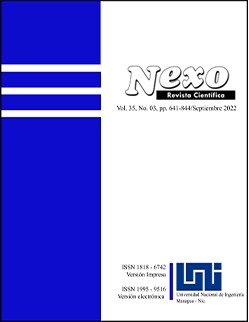Evaluating the effectiveness of cyber-physical systems and technologies in the construction complex
DOI:
https://doi.org/10.5377/nexo.v35i03.15008Keywords:
construction, cyber-physical systems and technologies, BIM, technologies of information modeling, efficiency, return on investmentAbstract
The problem of optimization of construction at all stages of the life cycle of a construction object is one of the most significant. The solution to this problem is the introduction of cyber-physical systems and technologies. The issues of introducing digital tools in construction have been of long-term interest to both researchers and practitioners, since these processes provide construction companies with additional economic benefits, reduce lead times and improve the quality of finished construction products. The article defines the main types of cyber-physical systems and technologies that have the potential for development the economy in the context of digitalization, identifies the main problems of introducing digital tools by small construction enterprises, systematizes and groups indicators for evaluating the effectiveness of their implementation. The authors propose three groups of performance indicators, including performance indicators of construction processes at the stages of the life cycle, performance indicators for the implementation of a construction process management system based on information systems and technologies, performance evaluation indicators for the implementation of investment projects for the implementation of cyber-physical systems and technologies in construction. The results of the study can be used to develop recommendations for improving the efficiency of construction processes based on the introduction of cyber-physical systems and technologies.
Downloads
1346
Downloads
Published
How to Cite
Issue
Section
License
Copyright (c) 2022 Universidad Nacional de Ingeniería

This work is licensed under a Creative Commons Attribution 4.0 International License.
The authors who publish in Nexo Scientific Journal agree to the following terms:
- Authors retain the copyright and grant the journal the right of the first publication under the license Creative Commons Attribution License, which allows others to share the work with a recognition of the authorship of the work and the initial publication in Nexo Scientific Journal.
- Authors may separately establish additional agreements for the non-exclusive distribution of the version of the work published in the journal (for example, in an institutional repository or a book), with the recognition of the initial publication in Nexo Scientific Journal.
- Authors are allowed and encouraged to disseminate their works electronically (for example, in institutional repositories or in their own website) before and during the submission process, as it can lead to productive exchanges, as well as earlier and greater citation of published works.










